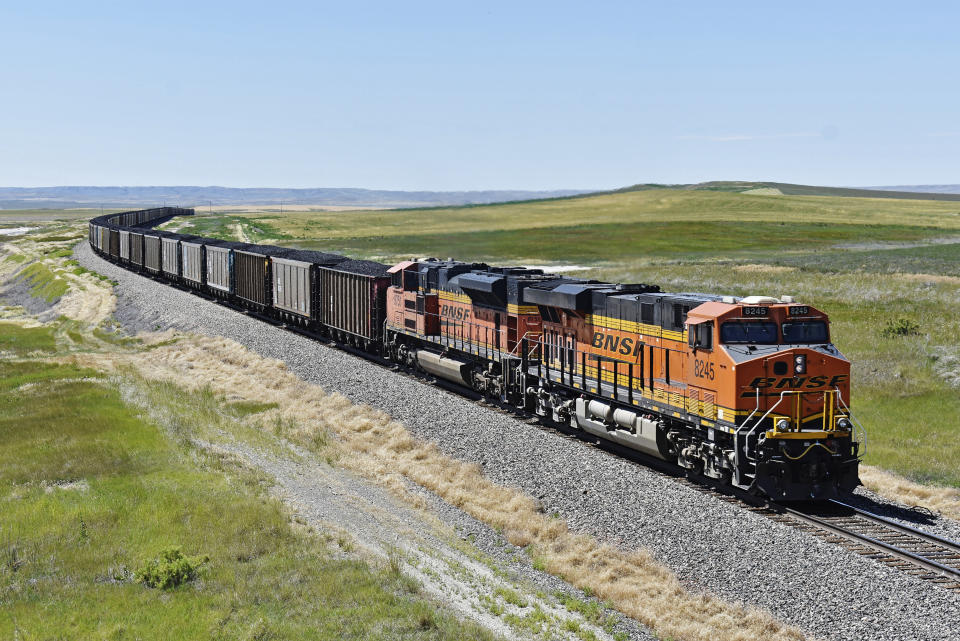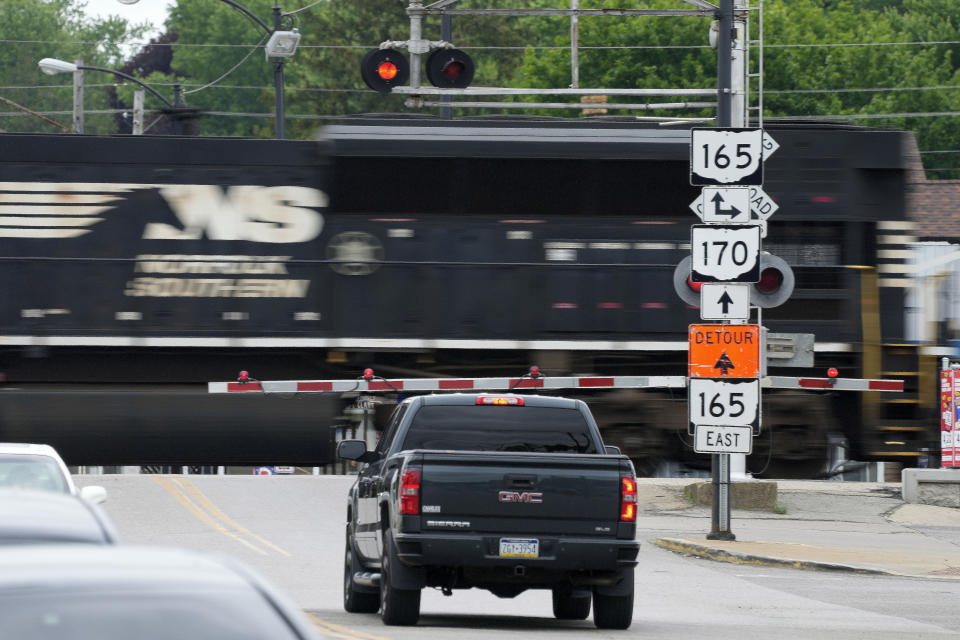Latest freight railroad layoffs and Wall Street pressure renew concerns about safety and service
OMAHA, Neb. (AP) — The latest rail layoffs this week, combined with an investment fund's ongoing campaign for control of Norfolk Southern, are renewing concerns among unions and regulators about the effects all the cuts might have on safety and service.
The worries about the lean operating model the major freight railroads have embraced for several years as they cut roughly one-third of their workforce are not new. It relies on fewer, longer trains that require fewer locomotives, workers and railcars. The railroads have defended their approach as a sound strategy to make the most of their resources without jeopardizing safety. But the industry has acknowledged that service suffered particularly in 2022 after the railroads cut too deep during the pandemic.
All the major freight railroads — and the Ancora Holdings investors targeting Norfolk Southern — have repeatedly stressed they are committed to improving safety, especially after last year's disastrous derailment in East Palestine, Ohio. Efforts to impose new safety rules on the industry have largely stalled since that crash, though the industry has taken several steps on its own like installing hundreds more trackside detectors to help spot mechanical problems.
But the chairman of the Surface Transportation Board, Martin Oberman, told an industry gathering this week that he believes Wall Street's focus on boosting short-term profits, stock buybacks and dividends undermines safety and service. And he said the recent investor pressure on Norfolk Southern and Union Pacific could prompt every rail CEO to back away from investing for the long run.
“Any campaign, proxy or otherwise, that threatens to undo recent efforts to rebuild the railroad resilience and move toward significant long-term growth would be a major setback,” Oberman said. “It would undercut safety and be the opposite of good business, the opposite of fulfilling the common carrier obligation, and the opposite of meeting the congressional commandment to serve the public.”
Ancora maintains that Norfolk Southern is misrepresenting its plans to regulators and investors as the railroad's board tries to recruit support for CEO Alan Shaw and his strategy of keeping more workers on hand during a downturn so the railroad will be better prepared to handle the eventual rebound in shipments. The investors say their picks for CEO and operations chief want to improve safety without widespread cuts, although their plan does call for shrinking Norfolk Southern's workforce through attrition as they streamline operations over the next couple of years.
“Our proposed CEO, Jim Barber, believes the health and safety of the company’s constituencies is the bedrock of long-term success. Our proposed COO, Jamie Boychuk, helped CSX dramatically improve customer service and go roughly two-and-a-half years without any work-related fatalities," Ancora said Friday in its latest letter to the board of Norfolk Southern. "They firmly believe that the health and safety of Norfolk Southern’s people and communities are the highest priorities.”
Three major rail unions have jumped into the fight over Norfolk Southern and urged investors to back Shaw's strategy and his efforts to improve safety ever since the Ohio derailment.
BNSF laid off more than 360 mechanical employees this week — just days after Warren Buffett told shareholders of his Berkshire Hathaway conglomerate that owns the railroad that he was disappointed in BNSF's profits — though that railroad said it is simply trying to shift workers to its busiest terminals. Union Pacific has also laid off several hundred workers since it named Jim Vena CEO last summer after a hedge fund pressured the railroad to change management. UP says most of those cuts were a normal seasonal move when major construction projects typically slow down because of winter.
The BNSF layoffs prompted a letter from the Transportation Trades Department labor coalition urging the Federal Railroad Administrator to step up inspections because unions believe these latest cuts — even though they are relatively small compared to the railroad's more than 37,000 workers — will make it even harder for the railroad to complete required repairs and inspect its locomotives and railcars.
“BNSF workers are being pushed beyond capacity, and with these additional cuts, there is grave concern that there will be additional lapses in safety,” the unions wrote. “We are seeing this verified in real time with exhausting and unsafe overtime mandates. It is time to stop the scheme that puts profits above all else.”
The head of the nation's largest rail union, Jeremy Ferguson, added to those concerns in his own letter calling out Buffett's pursuit of profits at worker expense. Ferguson, who leads SMART-TD, said instead of working “harder to grow, to earn new business or expand its relationships with the customers they have” BNSF is taking the easy route to improve the bottom line by “handing out pink slips and furloughs because the executives and shareholders must get theirs first and foremost."
BNSF spokeswoman Kendall Sloan said the railroad's furloughs weren't a widespread effort to cut costs. Instead, they should simply help the railroad ensure it has enough workers in areas where volume is growing across its network that crosses the western United States if workers accept incentives to move into other jobs.
“We believe any presumption that BNSF is shifting its priority away from safety is inaccurate," Sloan said. "We consider safety in every decision we make.”
Amit Bose, who leads the Federal Railroad Administration, said Union Pacific's furloughs since Vena took over “makes me question UP’s commitment to safety.”
But Vena responded in a letter of his own Friday that “Union Pacific will never compromise the safety of our employees or of the communities where we operate.” He said Bose's comments were misleading because he lumped together seasonal track worker layoffs with the furloughs of less than 100 mechanical workers last fall after shipping volume slowed.
The latest federal safety statistics for all of 2023 released Friday are mixed with the number of derailments nationwide dipping slightly while the rate of accidents along the main tracks between crossings increased 8%. But Association of American Railroads spokeswoman Jessica Kahanek said the trade group believes the “data clearly demonstrate a positive trendline” even though there is still need for improvement.



